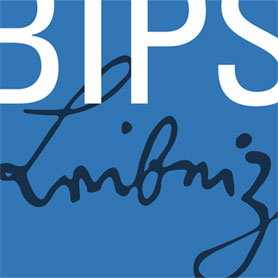Accessibility Statement
We strive to make the website of the Leibniz Leibniz ScienceCampus DiPH barrier-free. The declaration on accessibility is required by the Bremen Equal Opportunities for Disabled Persons Act. The technical requirements for accessibility result from the BITV 2.0.
This declaration on digital accessibility applies to www.lsc-digital-public-health.de/en/
How barrier-free is the website?
This website is only partially barrier-free. The requirements of BITV 2.0 are only partially met.
Which areas are not accessible?
- Descriptions for tables are partially missing.
- The assignment of table cells is missing for some tables.
- Partially missing alternatives / alternative texts for images and videos.
- Partially missing alternatives / alternative texts for control elements.
- Colors and contrasts are not strong enough in a few cases.
- The hierarchy of headings is partly not respected.
- Not all documents (e.g. PDF documents) are available in an accessible form.
- There is no high-contrast version of the website.
- There is no version of the website in plain language.
Disproportionate burden
Subareas that are not designed to be accessible because it would be a disproportionate burden (BremBGG § 13 (5)):
1. subarea: texts
a. Description
Texts in simple language are available for the navigation of the website. No further texts in simple language.
Explanation of why disproportionate burden exists.
Scientific texts can only be partially formulated in simple language. In most cases, they are addressed to a specialized audience with relevant prior knowledge. The use of relevant technical terminology and expressions in parts of the internet offer is due to the using target groups and partly to their scientific background. For example, this is the case with project descriptions (Research/Current Projects). Nevertheless, the editors strive for clear comprehensibility in the wording of the texts.
2nd subsection: Graphics with text
On some pages there are graphics with text.
Explanation of why disproportionate burden is present.
The graphics / illustrations are mostly used to illustrate scientific processes, most of which are described in the text, but are generally aimed at a specialist audience with appropriate prior knowledge.
When and how was the accessibility statement created?
This statement was created or revised on 5/31/2022.
The technical review of accessibility was conducted by:
BIPS Communication and Transfer Staff Office.
Would you like to report barriers?
We would like to continue to improve our services. Feel free to share your digital accessibility problems and questions with us: cloes(at)leibniz-bips.de
Representative for severely disabled persons
PD Dr. Oliver Riedel
Heidi Menßen (deputy)
Contact to the Central Office for Accessible Information Technology
If your contact with the public body was not successful, you can contact the Central Office for Accessible Information Technology. This also provides further information on enforcement.
 English (United Kingdom)
English (United Kingdom)  Deutsch (Deutschland)
Deutsch (Deutschland) 


